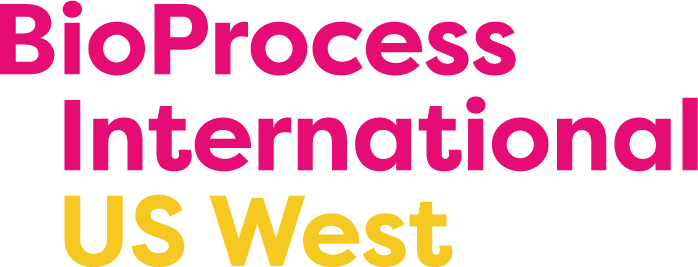Avoiding Pitfalls in FDA Inspections: A Guide for the Pharmaceutical and Medical-Technology IndustriesAvoiding Pitfalls in FDA Inspections: A Guide for the Pharmaceutical and Medical-Technology Industries
January 29, 2025
Regulatory compliance in the pharmaceutical and medical-device sectors is paramount for protecting public health. In the United States, the Food and Drug Administration (FDA) enforces laws and regulations to ensure that products meet stringent safety and efficacy standards. To achieve that goal, the FDA conducts inspection of manufacturing and distribution facilities. Authority for such activities derives from the Federal Food, Drug, and Cosmetic (FD&C) Act, particularly section 704, which grants the FDA broad powers to inspect facilities, records, and products.
The FDA’s guidance document Circumstances That Constitute Delaying, Denying, Limiting, or Refusing a Drug or Device Inspection outlines the behaviors and actions that can be deemed noncompliant during such inspections (1). The guidance clarifies what constitutes as obstruction of an inspection, helping manufacturers to avoid legal and regulatory repercussions. The document covers a breadth of scenarios, from preannounced inspections to refusals to permit entry, providing a clear framework for understanding FDA expectations.
Key Areas of Concern
The FDA guidance document identifies several key areas in which facilities must exercise caution to maintain compliance. Such areas include delaying, denying, limiting, or refusing an inspection. Each action can have significant implications for a facility, potentially leading to severe penalties, including the classification of products as adulterated.
Delay of Inspections: Preapproval and prelicense inspections tend to be preannounced, as are inspections for foreign facilities. Although the FD&C Act does not mandate preannouncements, they are a common practice to facilitate the inspection process. The FDA usually contacts a facility beforehand to ensure the availability of relevant records and personnel. However, delays in scheduling such inspections can constitute noncompliance, especially if a facility’s management fails to agree on a start date without reasonable explanation.
Consider a scenario in which a facility is notified of an upcoming preapproval inspection. The FDA attempts to schedule the inspection, but the facility’s management continually requests postponements without providing valid reasons. Eventually, the facility stops responding to FDA communications. In that case, the facility’s actions could be interpreted as a deliberate attempt to delay the inspection, potentially leading to regulatory action. A reasonable explanation, such as ongoing renovations that render a facility inaccessible or unsafe, would mitigate the situation only if properly communicated and documented.
Delay During an Inspection: FDA investigators are authorized to inspect all areas of a facility that bear on whether drugs or devices are adulterated, misbranded, or otherwise in violation of the FD&C Act. Delays during an inspection can arise from restricted access to operational areas, unavailability of necessary personnel, or delays in providing documentation. Such actions can hinder the inspection process significantly.
During an unannounced inspection, for example, an FDA investigator requests access to a facility’s sterile manufacturing area. The facility’s management, however, insists that the investigator wait several hours before entering, citing ongoing cleaning. Upon investigation, it is revealed that no such cleaning was scheduled, and the delay was an attempt to prevent the investigator from observing specific production activities. Such behavior would be deemed noncompliant because it obstructs the investigator’s ability to conduct a thorough inspection.
Delay in Producing Records: Facilities must be prepared to provide all requested documentation in a timely manner. Delays in producing records, especially without a reasonable explanation, can be considered an attempt to obstruct the inspection. The FDA’s authority extends to both hardcopy and electronic records, and facilities must ensure that such documents are readily accessible.
Consider a facility that maintains its financial and production records at an offsite location. During an inspection, the FDA requests specific records, but the facility’s management states that accessing those records will take several days. Such a delay, if not adequately justified, could be considered an obstruction. However, if the facility provides a clear explanation (such as the need to retrieve records from a remote archive) and works to minimize the delay, then it can avoid noncompliance issues.
Denial of Inspection: The FDA’s guidance interprets denial broadly, including behavior that prevents an FDA representative from conducting or completing an inspection. This encompasses both active refusals and passive actions that obstruct inspections. Denial can include outright refusals to schedule or allow inspections, as well as misleading or deceptive actions that hinder the inspection process.
For example, facility management falsely claims that it has ceased all manufacturing operations when FDA investigators arrive for an unannounced inspection. Representatives state that the site is undergoing renovations, and no products are being produced. However, subsequent evidence reveals that the facility had active production lines and was attempting to avoid inspection. Such behavior constitutes a clear denial of inspection because it involves intentionally misleading investigators.
Limiting Inspection: Limiting an inspection involves restricting its scope or extent, such as blocking access to certain areas, restricting observation of specific processes, or withholding information. The FDA considers such actions to be potentially obstructive because they prevent comprehensive evaluation of the facility’s compliance with regulatory standards. Facilities must provide FDA investigators with reasonable access to all areas and processes relevant to the inspection. Limiting access without a valid reason can be interpreted as an attempt to conceal noncompliance. For example, ceasing production during an inspection without reasonable explanation can hinder the FDA’s ability to observe standard operating procedures (SOPs) and manufacturing practices in action.
Imagine that an FDA inspection team arrives at a facility to conduct a routine inspection. Upon arrival, the team is informed that all production activities have been halted temporarily for maintenance reasons. However, there is no evidence of maintenance work being conducted, and the shutdown appears to have been orchestrated to prevent the inspection team from observing certain processes. Such actions are likely to be viewed as limiting inspection, potentially leading to regulatory action.
Limiting Photography: Photography during inspections serves as an objective method of documenting facility conditions. The FDA uses photographs to record evidence of compliance or noncompliance, such as the presence of contaminants, inadequate storage conditions, or improper labeling. Limiting the use of photography without legitimate reason can be seen as an attempt to obstruct the inspection.
During an inspection, for example, an FDA investigator attempts to photograph a specific area where raw materials are stored. The facility’s management objects, citing concerns about protecting trade secrets and proprietary processes. Although protecting sensitive information is a valid concern, it must be balanced against the need for transparency. The manufacturer should provide a reasonable explanation and offer alternate methods to document conditions without compromising proprietary information.
Limiting Access to Records: The FDA’s ability to review and copy records is a critical component of its inspection process. Limiting access to records, redacting essential information, or providing incomplete documentation can hinder assessment. Facilities must ensure that all relevant records — including electronic data — are available and accessible to facilitate thorough inspection.
For instance, an FDA investigator might request access to production records, including batch records and quality-control (QC) data. The facility provides some documents but withholds others, claiming that they are not relevant to the inspection. However, upon review, it becomes evident that the withheld records contain critical information about product quality and safety. Such selective disclosure can be considered an attempt to limit inspection, potentially leading to significant regulatory consequences.
Limiting or Preventing Sample Collection: An integral part of FDA inspections, sample collection enables laboratory analysis and compliance verification. Preventing or limiting collection can disrupt an inspection and raise concerns about product integrity.
During an inspection, for example, FDA investigators request samples of a recently manufactured batch of drug product (DP). The facility’s management refuses, citing that the samples are reserved for internal testing and cannot be released. The refusal to provide samples without a valid reason can be seen as an attempt to prevent the agency from conducting a thorough analysis. Facilities must ensure that all sample requests are met to verify product compliance.
Refusal to permit entry or inspection encompasses both active and passive behaviors that prevent FDA investigators from accessing a facility. This includes not unlocking doors, ignoring FDA communications, or otherwise making it difficult for investigators to conduct their work. Such actions can lead to severe regulatory consequences, including the classification of products as adulterated.
Imagine that an FDA inspection team attempts to schedule an inspection with a facility but receives no response despite multiple attempts. When the team arrive at the facility, they find it locked with no staff available to grant entry. The lack of communication and refusal to permit entry can be considered an obstruction of the inspection process. The facility must ensure that appropriate personnel are available to facilitate the inspection and provide necessary access. Acceptable reasons for postponing FDA inspections include emergencies and natural disasters, renovations and other planned shutdowns, cybersecurity incidents, and absence of key personnel.
Natural Disasters or Emergency Situations: During events such as the COVID-19 pandemic, companies faced significant disruptions that affected their ability to comply with inspection schedules. Natural disasters (e.g., hurricanes, floods, and earthquakes) also can render facilities temporarily inoperable or unsafe, justifying a request for inspection postponement.
Planned Shutdowns or Renovations: If a company already has scheduled a shutdown for maintenance or renovations, and the FDA proposes an inspection date during that period, then the shutdown could be a legitimate reason to request a delay. The FDA itself acknowledges that such planned events, which temporarily disrupt normal operations, may not be considered inspection delays.
Cybersecurity Incidents: In rare cases, companies can experience cybersecurity incidents that compromise their operational capabilities. For example, consider a company that experienced a significant cyberattack, leading to postponement of an FDA inspection by about a month. Although such situations typically are not publicized, they provide valid ground for requesting delays, especially when incidents affect access to critical systems or data.
Key Personnel Unavailability: Key staff members, such as those responsible for compliance or production, may become unexpectedly unavailable (e.g., due to illness or urgent personal matters). That could justify a request to postpone inspection. FDA guidance suggests that unavailability of essential personnel can be a reasonable explanation, especially if their presence is critical to inspection.
Practical Implications and Best Practices
Understanding and adhering to FDA guidelines during inspections is crucial for maintaining compliance and avoiding severe penalties. Facilities must implement best practices to ensure that they are prepared for inspections and can respond appropriately to FDA requests. Below are some practical steps that facilities can take to maintain compliance during inspections.
Preinspection Preparation: Facilities should conduct regular training sessions for staff members to ensure that they are aware of the FDA’s inspection process and the facility’s compliance obligations. That includes training on proper documentation, record-keeping practices, and communication protocols during inspections.
Maintaining accurate and up-to-date records is critical for demonstrating compliance. Facilities should establish robust record-keeping systems that provide easy retrieval of documents during inspections. This includes electronic record systems that are secure, reliable, and accessible to authorized personnel.
Facilities should conduct regular internal audits to assess their compliance status and identify potential areas of concern. These audits can help facilities prepare for inspections by ensuring that all areas comply with FDA regulations and that all necessary documentation is readily available.
Facilities must provide FDA investigators with unrestricted access to all areas and processes relevant to the inspection. That also includes access to secure areas such as cleanrooms or sterile processing zones, following appropriate gowning and safety procedures.
Transparency is key during inspections. Facilities should provide complete, accurate information to FDA investigators and prevent any actions that could be perceived as obstructive. Delays and restrictions must have clear explanations, and information and sample requests still must be met.
Establishing clear communication protocols can help to facilitate a smooth inspection. That includes designating a point of contact for an inspection team and ensuring that all relevant personnel are available to address questions or concerns raised by investigators.
Postinspection Follow-Up: Following an inspection, facilities should review the FDA’s findings and take immediate action to address any identified issues. That can include implementing corrective and preventive actions (CAPAs) to address noncompliance and mitigate future occurrences.
Manufacturers should document all actions taken in response to inspection findings and report them to the FDA as required. Facilities must provide evidence of corrective actions and demonstrate ongoing compliance with FDA regulations.
Continuous improvement is essential for maintaining compliance in the ever-evolving regulatory landscape. Manufacturers should review and update their compliance programs frequently to address new regulations and industry best practices, stay informed about changes in FDA guidance, and participate in industry forums and training programs.
Continued Compliance
Compliance with FDA inspection requirements is a critical aspect of ensuring the safety and efficacy of drugs and medical devices. The guidance document reviewed herein provides a framework for understanding the actions that constitute delaying, denying, limiting, or refusing an inspection. Facilities must understand the guidelines and align their practices with regulatory expectations to avoid severe consequences, including product adulteration designations and potential legal actions. To mitigate potential problems with the FDA, manufacturers should focus on maintaining clear, transparent, and proactive communication with the agency. Below are some specific actions that facility management can take to ensure compliance.
• Communicate all requests for postponement in writing and include detailed explanations supported by evidence, such as maintenance schedules, emergency reports, and medical documentation for key personnel. Documentation not only demonstrates the company’s commitment to transparency, but also helps to prevent misunderstandings.
• If an inspection is postponed for good cause, then provide the FDA with regular updates on the situation. For instance, if a facility is recovering from a cyberattack, updates could include the progress of system restorations and interim measures taken to maintain compliance.
• Develop and regularly update an emergency-preparedness plan with protocols for communicating with the FDA during unforeseen events. The plan should outline how a manufacturer will handle situations such as natural disasters, pandemics, and cybersecurity breaches and keep the FDA informed and involved in real-time decision-making.
• In complex situations, consult with regulatory experts who can guide your facility in navigating the scenario. Such professionals can assist with drafting communications, preparing documentation, and strategizing responses to meet FDA expectations.
Maintaining transparency and cooperation during FDA inspections is essential to protecting public health and preserving trust in medical products. Manufacturers should review and update their internal protocols regularly to ensure inspection readiness and foster a culture of compliance. For further guidance, industry professionals should consult the full FDA guidance document referenced below and seek expert advice when necessary. A proactive approach will help facilities to meet their regulatory obligations and uphold the highest standards of product quality and safety.
Reference
1 Guidance for Industry: Circumstances That Constitute Delaying, Denying, Limiting, or Refusing a Drug or Device Inspection. US Food and Drug Administration: Rockville, MD, 5 November 2024; https://www.fda.gov/regulatory-information/search-fda-guidance-documents/circumstances-constitute-delaying-denying-limiting-or-refusing-drug-or-device-inspection.
Vaibhav Patel is a highly accomplished quality assurance expert with over 13 years of specialized experience in drug development. As the director of quality assurance and regulatory affairs at the University of Minnesota (100 Church Street SE Minneapolis, MN 55455-0213), he oversees robust quality systems for clinical production and ensures full compliance with FDA regulations; [email protected].
You May Also Like







